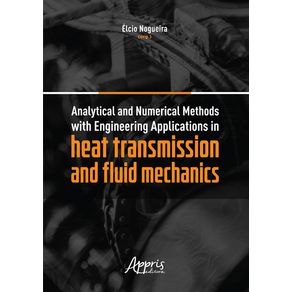Applications are related to heat transfer on finned electric motors, automotive radiator, nanoparticle thermal performance, flow and heat transfer on sloped, rough surfaces, one-dimensional and two-dimensional radial fin models using the Integral Transform Technique and Frobenius Method, applying the Hardy Cross Method to solve water supply networks and designing a subsonic wind tunnel. Finned Electric Motors: an important industrial application of extended surfaces, fins, occurs in electric motors. Electric motors are of vital importance in the industry as they are used in machines of all types, including, for example, computer ventilation and other electronic equipment. Compact Heat Exchangers: the growing need for technological advances in automotive vehicles demands research that can increase heat exchange efficiency in many of its components. Thermal control of vehicle engines is achieved through finned radiators, classified as Compact Heat Exchangers. External Boundary Layer: the main objective of the analysis is to review and discuss the principles of the similarity method applied to the boundary layer on inclined surfaces. Results are obtained for the hydrodynamic and thermal fields, such as coefficient of friction and Stanton number, as a function of the pressure gradient parameter and the Prandtl number. Internal Turbulent Flow: The analytic nature of the solution methodology here utilized the integral transform technique, associated to two-distinct solution procedure for fully developed turbulent flow, allowed to isolate the turbulent Prandtl number as main source of discrepancies between measured and calculated values for the Nusselt number. Nanoparticle Thermal Performance: Theoretical thermohydraulic performance analysis of a compact heat exchanger, type finned flat tube, used in automotive radiators is performed in based-water nanofluids. The theory of effectiveness (e-NTU), and experimental data for water flow, are used for comparison. The oxides used in the research are CuO (Copper Oxide) and Al2O3 (Aluminum Oxide). Results were obtained for air and water outlet temperatures, heat transfer rate, the pressure drop in finned channels and tubes, as a function of the volume fraction of the oxides. Hardy Cross Method for Water Supply Networks: the method allows the development and transformation of the complex system nonlinear equations, often with a high number of unknowns obtained from the analysis of a pipe network, into a simple system of algebraic equations, which maintains the physical meaning and facilitates the analysis of intermediate results obtained. Sizing a Subsonic Wind Tunnel for Automotive Testing: the detailed design of the definition of the geometric profile of each component is presented for the construction of a subsonic suction wind tunnel, closed test chamber and open circuit for testing small-scale models.

